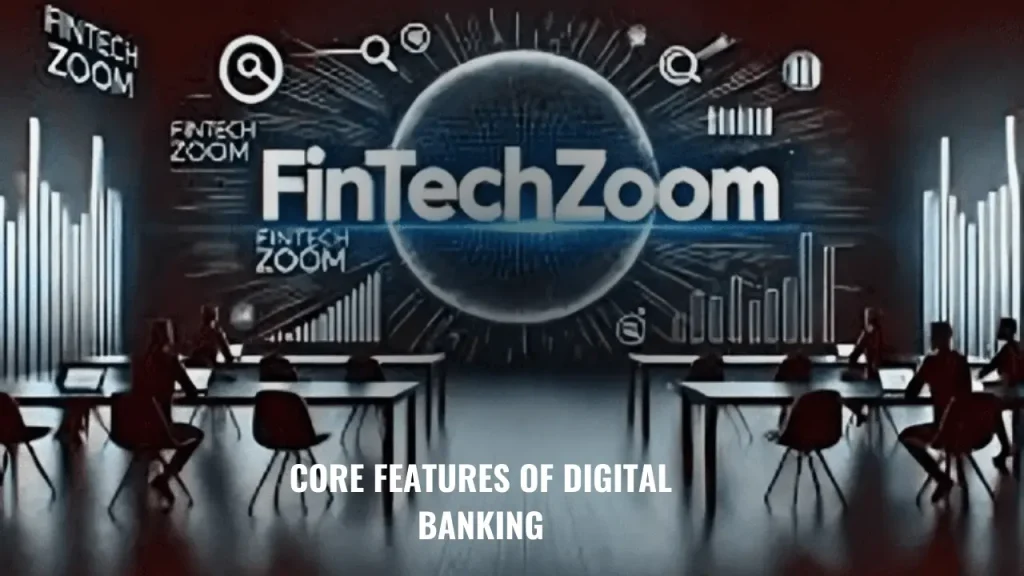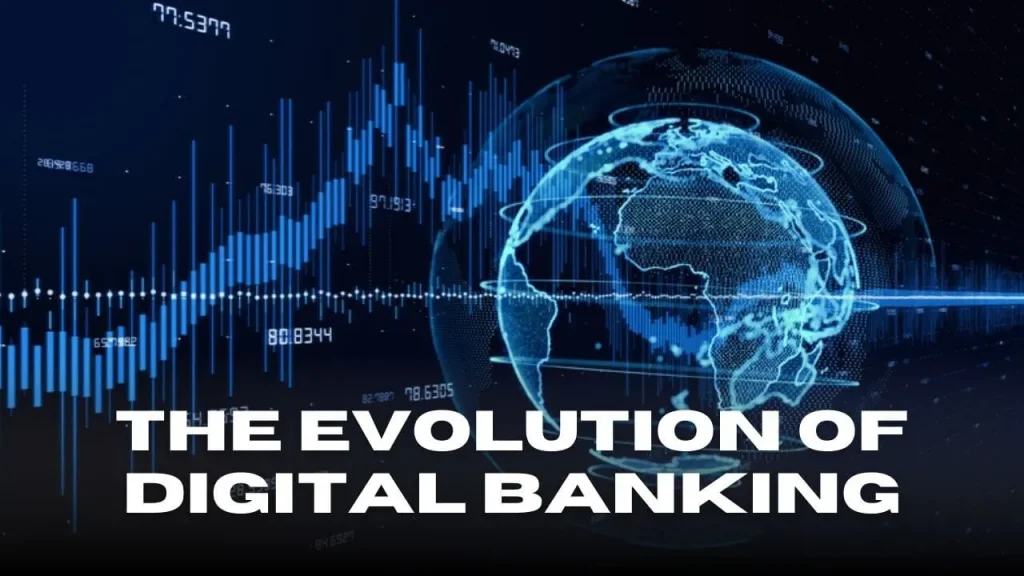FintechZoom .com – All In One Guide for Beginners

In the era of rapid technological advancements, the financial services industry is undergoing a profound transformation. At the heart of this revolution is digital banking, which has significantly altered the way consumers interact with financial institutions. Platforms like FintechZoom.com are at the forefront of this movement, providing insights into the evolving landscape of online banking, fintech innovations, and the impact these changes have on both consumers and traditional financial institutions.
Digital banking, powered by cutting-edge technologies such as artificial intelligence (AI), machine learning (ML), and blockchain, is reshaping how people manage their finances. It’s not just about conducting basic transactions anymore; digital banking encompasses everything from mobile payment solutions to complex investment strategies. In this article, we will explore the fundamental aspects of digital banking, delve into its evolution, and discuss the various services it offers to customers.
FintechZoom.com: A Comprehensive Look at Digital Banking
Digital banking refers to the process of delivering banking services through digital platforms, such as mobile applications, online banking websites, and other internet-based services. Unlike traditional banking, which relies on physical branches, digital banking enables customers to manage their finances at any time and from anywhere in the world, as long as they have internet access.
Through digital banking, individuals can perform a wide array of financial tasks—from checking account balances and transferring funds to applying for loans and paying bills. The accessibility and convenience offered by digital banking have led to its rapid adoption among consumers and businesses alike.
EXPLORE MORE
Core Features of Digital Banking
The appeal of digital banking lies in its ability to simplify and streamline financial tasks. Some of the core features that digital banking offers include:
- Account Management: One of the fundamental services of digital banking is account management. Users can check account balances, view transaction histories, and monitor spending in real time. With features like automated budgeting tools, banks help users track expenses, set financial goals, and get insights into their spending habits.
- Online Transfers and Bill Payments: Digital banking allows customers to transfer money between accounts, make payments to merchants, and pay bills with just a few clicks. Services like Peer-to-Peer (P2P) payments have made it easier than ever to send money to friends or family instantly.
- Remote Deposit and Withdrawals: Using mobile apps, customers can deposit checks remotely by simply snapping a photo, eliminating the need to visit a bank branch. Similarly, many digital banks offer easy ways to withdraw funds from ATMs or other online accounts without the hassle of traditional banking processes.
- Loan Applications and Management: Many online banks and financial institutions now offer users the ability to apply for loans and manage existing ones directly through their digital platforms. Whether it’s a personal loan, a mortgage, or student loan repayment, digital banking simplifies the process by making it faster, more accessible, and less bureaucratic.
- Investment Management: Digital banking platforms often include features that allow users to invest in stocks, bonds, and mutual funds. Robo-advisors—automated platforms that manage portfolios—have become a popular option, providing personalized investment strategies at a fraction of the cost of traditional advisors.
- Security and Fraud Protection: As digital banking has evolved, so too have the measures to ensure security. Encryption technologies, two-factor authentication (2FA), and biometric recognition are just a few of the features that financial institutions have implemented to safeguard user data and prevent fraud.

The Evolution of Digital Banking
The rise of digital banking didn’t happen overnight. It’s the result of decades of technological progress and innovation. Here’s a look at how digital banking has evolved over the years:
EXPLORE MORE
Early Online Banking
The concept of online banking dates back to the early 1980s, when some financial institutions began experimenting with remote banking services. In 1980, United American Bank launched the first home banking service, allowing customers to access their bank accounts from home using a computer and a telephone line. Though rudimentary by today’s standards, this marked the start of a major shift in how consumers interacted with their banks.
By the mid-1980s, the Bank of Scotland introduced “Homelink,” the first internet banking service in the UK, which enabled users to access their accounts via television and phone lines. While this service was limited to a small group of customers, it was a precursor to the widespread use of online banking.
The Mobile Banking Era
As the internet began to take off in the 1990s, so did online banking. In 1994, Stanford Federal Credit Union became the first financial institution in the U.S. to offer internet banking to all of its customers. At this point, online banking was still limited to basic services such as checking account balances and transferring funds between accounts.
The real game-changer came in 2007, when the Bank of Scotland introduced the world’s first mobile banking app. This innovation allowed users to manage their finances from the palm of their hand, and it was a major milestone in the development of modern digital banking.
EXPLORE MORE
The Rise of Artificial Intelligence and Big Data
In recent years, artificial intelligence (AI) and big data have become integral parts of the digital banking experience. Banks now use AI algorithms to offer personalized financial advice, predict spending patterns, and even detect fraudulent activities. Big data enables banks to process vast amounts of customer data, which in turn helps them provide more tailored services.
Additionally, banks are using machine learning to assess credit risk, which leads to more accurate loan approvals and more fair lending practices. The integration of these technologies is reshaping how digital banks offer services and interact with customers.
How Digital Banking Differs from Traditional Banking?
The key difference between digital and traditional banking lies in how customers interact with their bank. Traditional banking relies heavily on physical branches, where customers must go in person to conduct most transactions. In contrast, digital banking allows for a more flexible and remote experience.
Digital banking also offers greater cost-efficiency. Because online banks don’t have the overhead costs associated with maintaining physical branches, they can afford to charge lower fees and offer higher interest rates than traditional banks.
However, while digital banking offers increased convenience, traditional banks still offer a wider range of services. For example, many physical banks have wealth management advisors, business loans, and in-person customer service, which online-only banks often lack. Many traditional banks are, however, catching up by integrating digital banking services into their offerings, providing a hybrid model that combines both physical and digital banking services.
The Future of Digital Banking
The future of digital banking looks bright, with new technologies and innovations constantly emerging. Some key trends shaping the future of digital banking include:
Open Banking
Open banking refers to a system where consumers have the option to share their financial data with third-party providers through secure APIs. This creates opportunities for banks and fintech companies to collaborate and offer innovative new products and services, such as account aggregation and personalized financial advice.
Open banking is already making waves in Europe, where regulations such as the PSD2 directive are pushing banks to make customer data accessible to authorized third parties. In the coming years, open banking is expected to grow rapidly, providing consumers with more control over their financial data and access to a broader range of services.
Blockchain and Cryptocurrencies
Blockchain technology is poised to transform digital banking by providing a decentralized and secure way to conduct financial transactions. Blockchain eliminates the need for intermediaries, which can reduce transaction costs and enhance efficiency, particularly for cross-border payments.
Cryptocurrencies like Bitcoin and Ethereum are also playing an increasing role in the digital banking ecosystem. Many digital banks are now offering cryptocurrency trading and custody services, allowing customers to buy, sell, and hold digital currencies directly through their bank accounts.

Voice-Activated Banking
Voice-activated banking is another exciting development that is becoming more popular. With the rise of virtual assistants like Alexa, Siri, and Google Assistant, voice commands are becoming a more natural way for people to interact with their digital bank accounts. Users can check balances, transfer funds, and even pay bills just by speaking to their devices.
EXPLORE MORE
While voice banking is still in its early stages, it’s expected to grow in popularity, especially as more banks integrate voice features into their apps and platforms.
Security and Privacy in Digital Banking
As digital banking continues to grow, so does the importance of ensuring security and privacy. Banks are investing heavily in encryption technologies and multi-factor authentication (MFA) to protect user data. The use of biometric verification, such as facial recognition and fingerprint scanning, is also gaining traction as a means of securing digital banking accounts.
While digital banking offers many benefits, customers must remain vigilant about potential security threats, such as phishing scams and identity theft. As the digital banking landscape evolves, it will be crucial for both consumers and banks to prioritize security and data protection.
Conclusion
In conclusion, FintechZoom.com and the broader landscape of digital banking have redefined the way we manage our finances. From simple transactions like checking balances and transferring funds to complex financial services like loans and investments, digital banking offers convenience and accessibility that traditional banking could never match. As technology continues to advance, we can expect even more innovations in digital banking, from open banking to blockchain integration.
However, with these advancements come new challenges, particularly regarding security and privacy. It’s crucial for consumers to stay informed about these changes, leverage the new tools available to them, and take steps to protect their personal data.
The future of digital banking looks promising, with an emphasis on enhanced security, greater accessibility, and improved customer experiences. As we continue to embrace these technological innovations, digital banking will undoubtedly play an even larger role in our daily financial lives.
